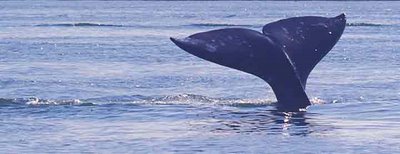Life Between the Tides: The Intertidal Region of Monterey County Coast

The tides are in our veins, we still mirror the stars, life is your child…
Robinson Jeffers
From the exposed rugged Big Sur cliffs to the relatively protected waters of the Elkhorn Slough, from rarely visited beaches and dunes of north-county to the heavily visited pier at the wharf, Monterey County is blessed with a unique, stunning, and diverse coastline. Hidden along this shoreline, and often missed, is one of the most fascinating and unique ecosystems—life between the tides. The central coast of California has one of the richest intertidal areas of the North Pacific Ocean. Organisms from the north and south converge their ranges creating an extraordinary diversity of species. Winds and currents push the surface water of the Pacific Ocean away form the shore causing an upwelling of colder nutrient laden water to rise. Plants flourish in these rich waters and provide nourishment right on up the food chain to the abundant organisms that inhabit, feed, and scavenge in the intertidal region.
Like the pulse of a planetary heartbeat, twice every day there are two high tides and two low tides. The highest and lowest tides of the month follow close to the moons cycle and occur near the full and new moons, roughly once every two weeks. The intertidal region is the area between the lowest tides up to the splash zone of the highest tides. The residents of the intertidal region are tough as nails and surprisingly delicate, and often both at the same time. The plants and animals that make their home here quite literally have a foot in two very different worlds. One home is the ocean, where they live in a saltwater environment, surviving currents and waves that pound with unrelenting power, where any number of predators from the sea comes to forage. The other world is that of land, where they must survive the direct exposure to wind, the sun’s heat and ultraviolet light, rain that dilutes salinity, not to mentions the numerous land animals and birds that come to feed. The organisms that have evolved to inhabit these two radically different environments have adapted over millions of years. It is in this extreme and dynamic environment where many scientists feel life first came to land.
I divide Monterey County’s coastline simply into three regions: rocky shoreline, sandy beach, and the protected waters of sloughs and bays. Many of the intertidal regions develop "life zones,” groups of organisms that live in distinct zones depending on their height above sea level. The rocky shoreline is the easiest place to see this banding together of organisms known as intertidal zonation. The rocky intertidal region is usually divided into four zones from the highest to lowest: the splash, the high intertidal, the mid-intertidal, and the low intertidal zone. If you happen to be at low tide along the rocky shore look down the shoreline and you can see the parallel bands of color. Each zone is distinct in its physical conditions as well as the flora and fauna that inhabit each zone. To some degree this zonation occurs in the sandy beach and slough environments, however it is often less distinct and more difficult to easily see at first look.
Most of our coastline is impacted by yet another and sometime tougher pulse than that of the tides. Wave after wave constantly caresses, or more often, pounds the shoreline. With an average of 5 waves a minute, 300 an hour, 7200 a day or an incredible 2,628,000 waves a year this constant force shapes and sculpts not only our coast but also the organisms that live here. From small 1-inch wind waves to monster waves measuring over 30 feet the shoreline is in almost constant movement. Sandy beaches seasonally demonstrate this continuous movement with the smaller summer waves tending to deposit sand while the larger winter waves tend to strip sand from the beach. Many of our sandy beaches disappear in the winter to return in summer.
The people of the central coast have always related to the sea and in particular the intertidal region. When it comes to the shoreline of the intertidal region we humans have often “loved the place to death.” We have a history of overusing this tough yet fragile ecosystem. As we understand more we hopefully will also change our actions and choices to protect our unique intertidal ecosystem.
If you decide its is important to learn more about our shoreline there are any number of good books and internet resources that will get you started. Additionally, we have the Monterey Bay Aquarium with its world-class exhibits and educational programs to guide and inspire your learning. Whether it’s to observe the abundant wild life or simply to listen to the sounds of the waves, head down to the shoreline with your senses alert and alive to its beauty. Here’s the important part… you don’t have to know the names of what you discover to enjoy your exploration. The most skilled naturalist engages all of their senses when observing the natural world. Take the time to thoroughly let in all that you observe. Be like a sponge and soak it in—you will be richly rewarded.
Labels: Big Sur, intertidal, ocean, tide pools

